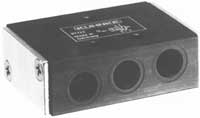The Importance of Controlling Pneumatic Systems
Pneumatics, as a form of energy transmission, are meant to perform work. To accomplish this feat, pneumatic control systems require the application of kinetic power to resisting objects that result in the moving of an object through a distance. Energy gets stored in a pneumatic system (potential state) under the form of compressed gases or air. Kinetic energy (working energy) results in a pneumatic control system when the compressed air in the system can expand. Users open tan outlets to expand the air inside the tank. This is done until the pressure inside is equal to atmospheric pressure.

The ability to control pneumatic energy effectively and efficiently is essential. Working energy that is transmitted pneumatically always has to be directed under control. Useful work cannot be done and machine operators run the risk of harm if pressure is not kept under total control.
Pressure, ideally, is controlled at two separate points: the first is after the compressor, and the other is after the air receiver tank. For safety reasons, control of pressure after the compressor is a requirement. Controlling pressure after an air receiver tank is also a requirement. Without it, the actuator would not receive steady pressure without wasting a great deal of energy.
pneumatic controls
In pneumatic control systems, the energy delivered by compressors is not immediately used. Instead, it is stored as potential energy (in an air receiver tank) in the form of compressed air. Keeping control of your system keeps employees safe and your business moving smoothly. We also carry a full line of pneumatic valves.
Related Reading
- Understanding Basic Pneumatic Valve Functionality
Barostat systems need to keep constant pressure in closed chambers, which is achieved by using pneumatic systems and tools, such as miniature solenoid valves and pneumatic valves.
- Common Functions of Pneumatic Valves
- Why Pneumatic Systems are Essential for Modern Automation
- Tips for Effectively Using Pneumatic Controls


- Ellis/Kuhnke Controls
132 Lewis Street Unit A-2, Eatontown, N.J. 07724
Phone: 1-800-221-0714
Fax: 732-291-8154
Email: Info@ekci.com
- Home Pneumatic Controls Technical Info CAD Drawings Contact Us Pneumatic Timers Blog Site Map
